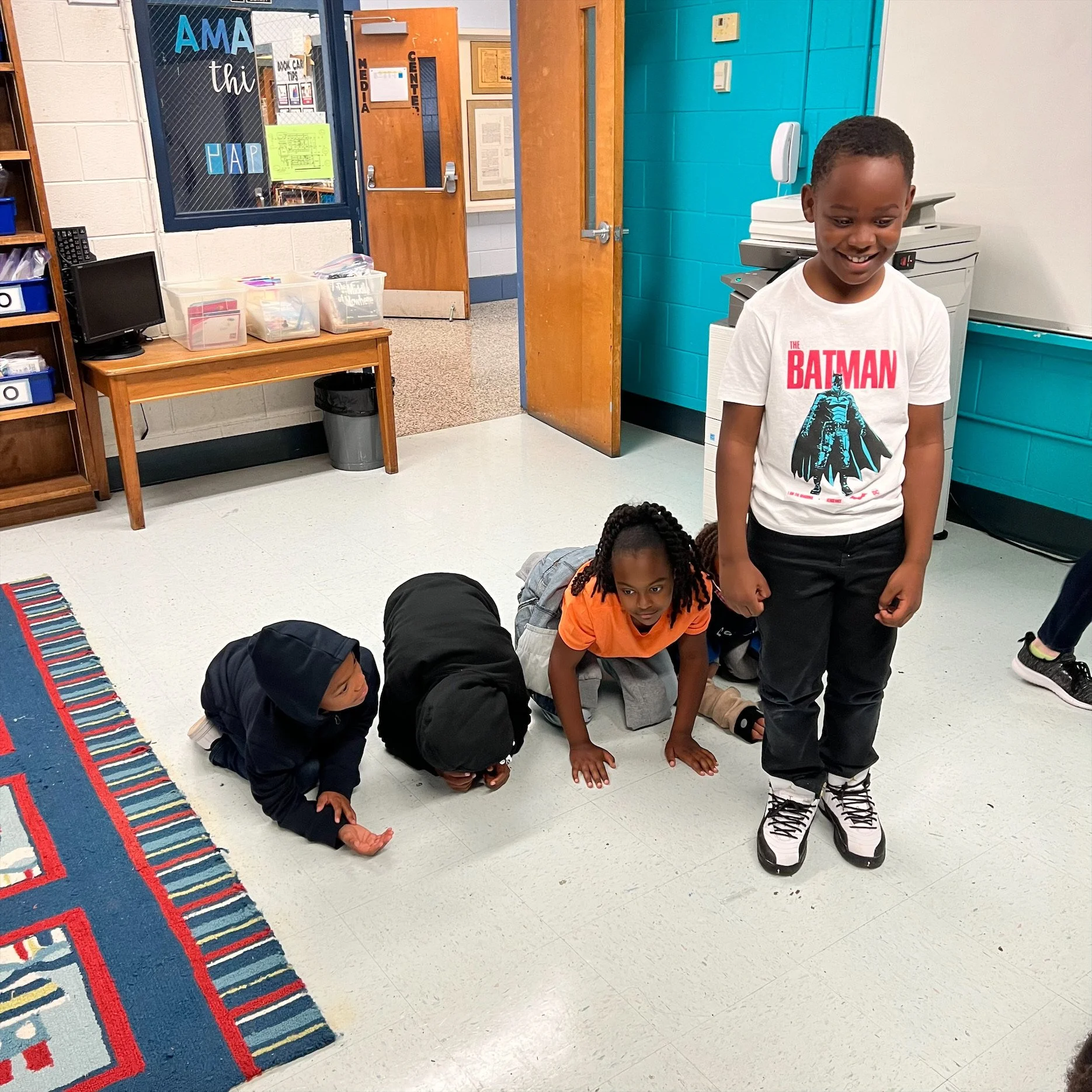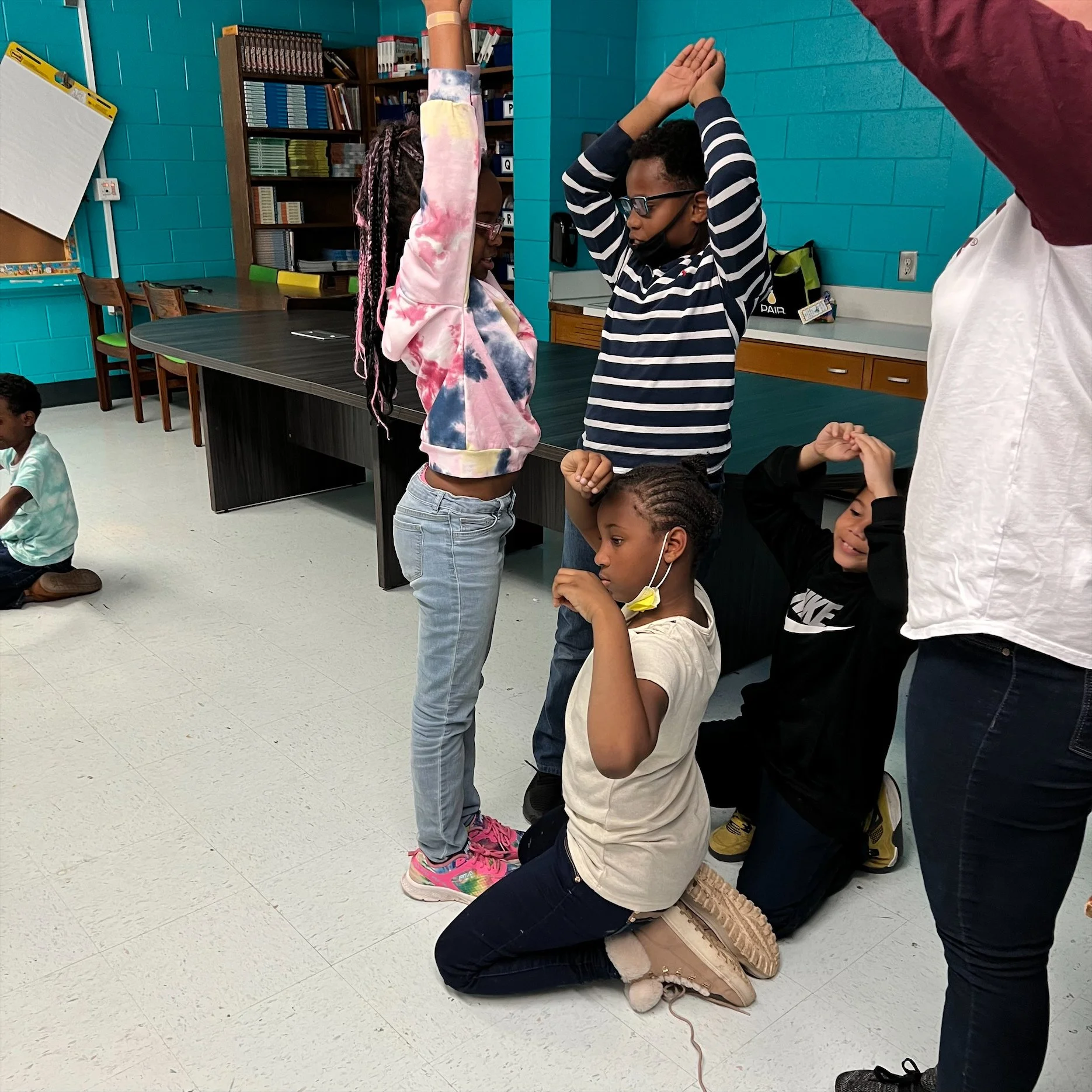Why is arts integration important? Creative teaching helps every child find success.
Students with special needs need creative teaching to engage.
Arts integration can feel like one more thing for teachers to do. An add-on. Another expectation, another box to check. I get it. We ask so much of teachers-- to counsel, encourage, coach, calm, feed, nurture and-- oh by the way-- teach our children. So, why is arts integration important? Why would teachers willingly add to their ever-growing list of things to do? Arts integration serves the needs of every single diverse learner in your class. You read that right. All of them.
Here’s a story of one brave teacher who made a lasting impact in the life of a child with some creative teaching. It all started with decimals.
PAIR was partnered with South Columbus Elementary School in Columbus, Georgia. Teachers participated in regular after school arts integration trainings, learning how to fuse the arts and content learning so that students grew both as artists and as content scholars. PAIR introduces arts-based strategies to approach learning in unique ways and then follows up by visiting classrooms to support teachers trying new, creative teaching. Kathy Bolar, a teacher of Special Education students, was trying to help Trey* understand decimal values. The class had been working on decimal placement, greater than and less than, and ordering numbers based on their values.
Trey was not interested in decimals. He wasn’t interested in school at all. He slept nearly the whole day. He stole items like paper clips and crayons from students and the teacher just to steal them, not for their value, but just to do it. He consistently failed most every assignment because he just didn’t try. Kathy thought that he failed assignments because failing was the one thing he knew he could do successfully. Trey was non-verbal and non-responsive. According to Kathy, there was next to no parent support. And though she was an experienced teacher, she tried everything she knew to get Trey to engage in some way, but he just wouldn’t budge.
Arts-Based Creative Teaching Strategy: Line Ups
Until the day she tried a new arts-based strategy to practice and reinforce decimal values. The strategy was called Line Ups.
Here’s how it works: a number of students stand silently in front of the class holding signs/dry erase boards with (in this case) Decimal Numbers standing shoulder-to-shoulder. The students work together silently to arrange themselves in an order, like least to greatest value.
Artists often communicate without words and this strategy helps them develop non-verbal communication skills. This is a major challenge in this strategy. The students in the class were struggling to figure out the correct order and to “listen” to each other without silently arguing. The group would try, make a mistake, and Kathy would take the teachable moment opportunity to explain why it was wrong. They kept trying but struggling to work together and find the correct Line Up order. Until Trey.
He picked up his head from the desk, stood up and positioned himself in front of the line. Kathy didn’t interrupt. She encouraged Trey to try to arrange the order from least to greatest value. On the first or second try, he had done it. Trey arranged the Decimal Numbers correctly by stepping into a leadership role and directing students where to stand. He pointed to tell students where to go, he reassured them, he insisted when someone disagreed with him silently. Trey never said a word, never had to explain verbally. He showed his math understanding in a completely different way. Kathy asked him if he wanted to explain his work, and he shook his head ‘no.’ Kathy asked a different student to explain his work to the class.
With this quick decision, Kathy showed the class that Trey had expertise in decimal value and that it was okay to communicate in different ways. She subtly reinforced his knowledge and elevated his status in the class.
So why is arts integration important?
Arts integration allows students to build a framework and context of understanding in multiple modalities. It is engaging, fun and exercises different learning muscles. Sometimes students who are not successful in typical classroom environments achieve in arts integrated classrooms because they are being asked to learn and show learning in different ways.
Trey would have never completed a worksheet on Decimal Numbers. He wasn’t interested in taking the test either. But Kathy now knew that Line Ups was an instructional tool that would help Trey respond. She used it for him to show his mastery of the standard. And he did.
Did Trey miraculously wake up from that day on, decide to share verbally and never take another paper clip? No. But for that one moment on that one day in math, Trey showed success in decimal value. His work helped the class understand the concept more clearly. Kathy did report that this moment in math helped strengthen their teacher-student relationship and she was more able to communicate with him moving forward. Baby steps, right?
So, why is arts integration important? Kathy was able to answer that question for herself more clearly that day. Although she doesn’t love every arts-based strategy, PAIR has helped her find tools that work for her in her creative teaching journey.
Are you interested in knowing how to answer “why is arts integration important” to your classroom? Contact us to find out more about what the PAIR Program can do for you!



